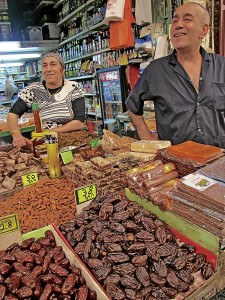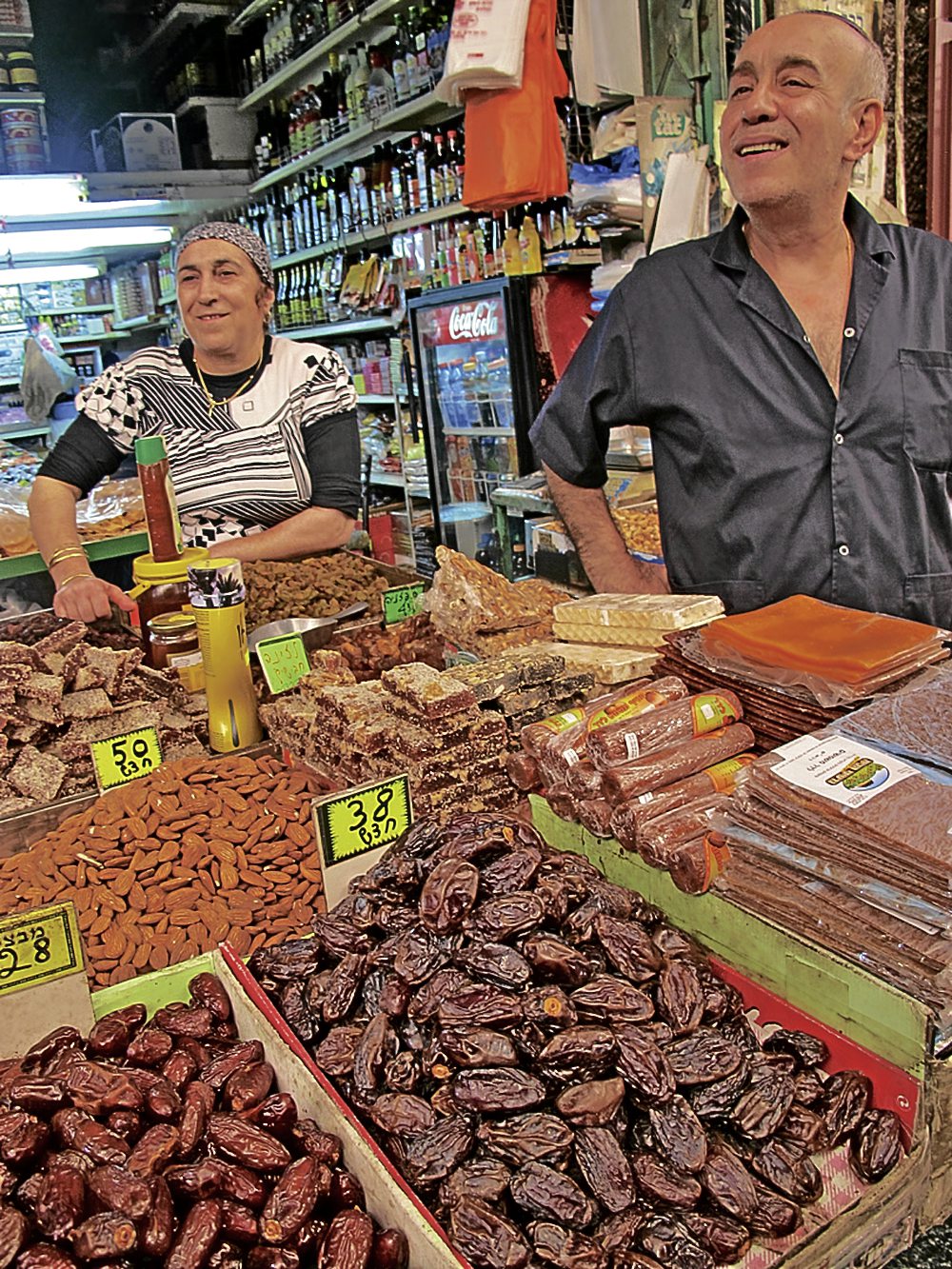
Maybe I was brought up properly, but I always ask permission when I want to photograph a dish or a group eating. And so I did just that when I espied three men seated by the roadside in Jerusalem, Israel, enjoying their afternoon repast. I thought that the group, with a painting beside them of people also eating and drinking, made for a good picture.
The three men more than allowed me; they insisted that I join them and, as a form of welcome, gave me a taste of a dip wiped on the bread they were eating. I hadn’t finished the bread when the cook came out of his kitchen to make me taste the falafel he was cooking. Falafel is considered street food, something to eat fast as is, or placed in bread with some salad. The brown croquette was still hot and I inhaled much too fast to hasten the cooling.
Main ingredient
The cook was trying to tell me that he made a mean falafel. Words weren’t needed, however, because it was the best I had tasted on that visit, seasoned perfectly and freshly done. Having eaten many falafel versions in Manila, I always wondered why people say it’s good food because those were mostly tasteless, relying mainly on the tahini dip that often accompanied the dish for the flavor.
My theory is that the goodness in the Israeli version comes from the main ingredient. For falafel, that can be either chickpeas or fava beans, or both. Let me judge it from the chickpea point of view. At one of the restaurants in Jerusalem called “Ima” (yes, it means mother in Israel and in Pampanga), they serve hummus with chickpeas still whole on top.
A taste of those legumes made me realize they were far tastier than what we get here; it was no wonder the hummus at every restaurant we went to was always creamy and still tasting of chickpeas.
We had just come from the Mahane Yehuda Market and were on our way to our dinner. It was quite tempting to just sit with those men, to drink and eat what they had ordered while enjoying the cooling temperature of Jerusalem just before sundown.
Brilliant colors
As in all markets, the produce, ingredients and cooked food offered give an idea of the preference of locals. Dried fruits were aplenty—a good way to preserve the multitude of fresh fruits that give brilliant colors to the market stalls and give us the best fresh juice.
We invariably ordered hand-pressed orange and pomegranate to drink, the latter a luscious red with seeds and tasting a bit tart. I was surprised that there were dried kiwi fruits, but dates were expected since the Middle East is known for its palms and the fruits.
At last, I was going to taste fresh figs, which were in season during our visit. The excitement made me buy more than our group could consume, and I had to sadly say farewell to the rest of the uneaten and decaying fruits the next day. The other fruits eaten at our hotel breakfast were also always sweet—plums, melon, grapes, watermelon.
I have read about and then seen on this trip the transformation of desert land into lush greenery. On our way to Haifa in the northern part of the country, there were banana plantations, though there were no bananas in the market that season. It seemed strange, though, to see banana plants under a netting.
There were a myriad of confections and pastries in the market. One of them, halva, is a mixture of butter and sugar with either semolina flour or ground nuts. They were displayed in all their variations, with whole nuts peeping out of the mix and looking like chalk blocks, just like the Jerusalem stone, those whitish beige limestone that every building in Jerusalem is required to use in the facade.
There was baklava, and also phyllo pastry in layers with nuts and honey. But both made my hair stand when I was offered pieces to taste, because they were too sweet.
Various breads
Bread was plentiful—different loaves whose names we didn’t know. We thought a lot of breads are needed indeed for the many dips we were served, and the different cream cheeses available. One stall had what looked like one of our traditional breads, the pan de pula (or de regla) with a red filling made from stale bread rehashed.
In Old Jerusalem (the ancient city), we passed by many bread shops and those that double as coffee places. We munched on flat crisp bread loaded with sesame seeds. We don’t know if the same breads sustained the ancient populace that lived within the walls, but it was, well, food for thought as we walked through the Via Dolorosa or the Stations of the Cross.
When we were told of a drink with an aphrodisiac effect, all of us scrambled to that area of the market where the drink was waiting to be sampled. Our guide said it had gat (also called khat), leaves from a shrub or tree that is a stimulant and is mainly used in Yemen. We were curious and thrilled to drink what probably comes closest to our idea of liquid marijuana.
It has been reported that one of the effects of gat is that it suppresses appetite. That didn’t happen, because we finished our dinner of Indian cooking at Kohinoor and sampled light Israeli red wine. The proprietor is called the curry queen, a celebrity chef whose TV cooking class flashed on the screen while you eat.
E-mail [email protected].









































